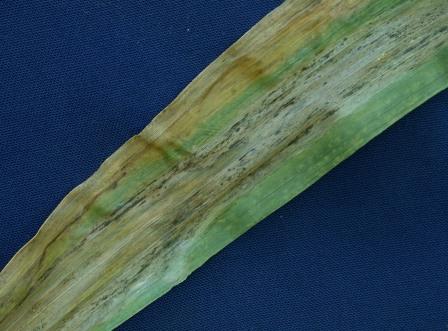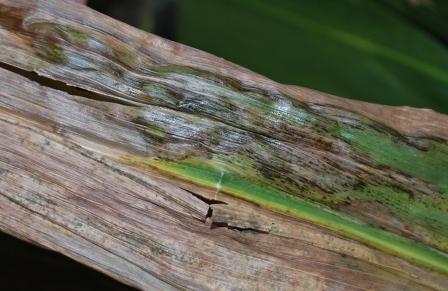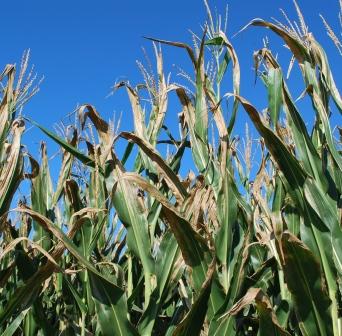Published 16 Aug 2008
URL: http://www.kingcorn.org/news/articles.08/GossWilt-0816.html
Gossís Bacterial Wilt Confirmed in Indiana
Kiersten Wise & Gail Ruhl
Botany & Plant Pathology Dept., Purdue Univ.
West Lafayette, IN 47907-2054
Email address: kawise
at purdue.edu
There is a new disease of corn on the scene in Indiana: Gossís Wilt.† The disease was confirmed at the Purdue Plant and Pest Diagnostic Laboratory this week on field corn and popcorn samples submitted from northern Indiana.† Gossís Wilt is a bacterial disease that infects susceptible varieties of sweet corn, popcorn, and hybrid corn. This is Purdueís first confirmation of Gossís Wilt in Indiana since the disease was discovered on corn in Nebraska in 1969 (Jackson et al., 2007).† The disease is found sporadically throughout the Midwest in limited areas and years, and is currently only present in one county in Indiana.†
Gossís Wilt is caused by the Gram positive bacterium Clavibacter michiganensis subsp. nebraskensis and is characterized by distinct light tan to gray lesions filled with dark specks (Figure 1).†† Lesions will often appear shiny due to bacteria oozing onto the leaf surface (Figure 2).† Blighted areas are common in susceptible varieties (Figure 3), and can be confused with sunscald or drought stress.† The dark flecking and shiny areas within lesions distinguish Gossís Wilt from another bacterial disease, Stewartís Wilt, which has elongated lesions that run parallel to the veins and taper off to a point.† Gossís Wilt can also infect the vascular tissue of the plant causing a systemic infection.† Infected vascular tissue appears orange to brown and can cause wilting and stalk degradation.†
†The bacteria overwinter in infected residue on the soil or in limited weed hosts.†† Reducing the amount of debris remaining on the field through conventional or limited tillage practices is of primary importance.† Rotation to soybean, wheat, alfalfa or another non-host can also help encourage decomposition of infected corn debris.† Replanting corn into infected corn stubble is strongly discouraged in areas where the infection has occurred.†
Studies in Nebraska have shown that the bacteria is capable of being both seedborne and seed transmitted. The disease is not insect-transmitted, like Stewartís Wilt, and relies on wounds for dispersal.† Once seed to seedling transmission occurs, disease spreads in areas that have experienced hail-damage or wind-driven rain.† Early hailstorms and recent heavy rains and windstorms likely contributed to the infection and dispersal of Gossís Wilt in fields in Indiana.
Currently, the susceptibility level of most varieties of popcorn, sweet corn, and hybrid corn to Gossís Wilt in Indiana is unknown.† Partially resistant hybrids are available in other areas of the Midwest, such as Nebraska, but hybrid performance in Indiana is unknown at this time.† It is important to note that fungicides will NOT control Gossís Wilt, since the disease is caused by a bacteria and not a fungus.
Other plant diseases or injuries can easily be mistaken for Gossís Wilt.† Suspect samples may be sent to the Purdue Plant and Pest Diagnostic Lab for diagnosis. There is an $11.00 sample handling fee and an additional $25.00 testing fee for serological confirmation of the bacteria.
Related References
Jackson, Tamara, Robert Harveson, and Anne Vidaver. 2007. Goss's Bacterial Wilt and Leaf Blight of Corn (G1675). Univ of Nebraska Extension. [On-line]. Available at http://www.ianrpubs.unl.edu/epublic/live/g1675/build/g1675.pdf. [URL accessed 8/16/08].

Fig. 1. Diagnostic lesions of Gossís wilt with dark specks or Ďfrecklesí present
in the lesion.

Fig. 2. Bacterial ooze present on the lesion surface will appear shiny in
sunlight.

Fig. 3. Blighted areas in the upper canopy of infected plants

